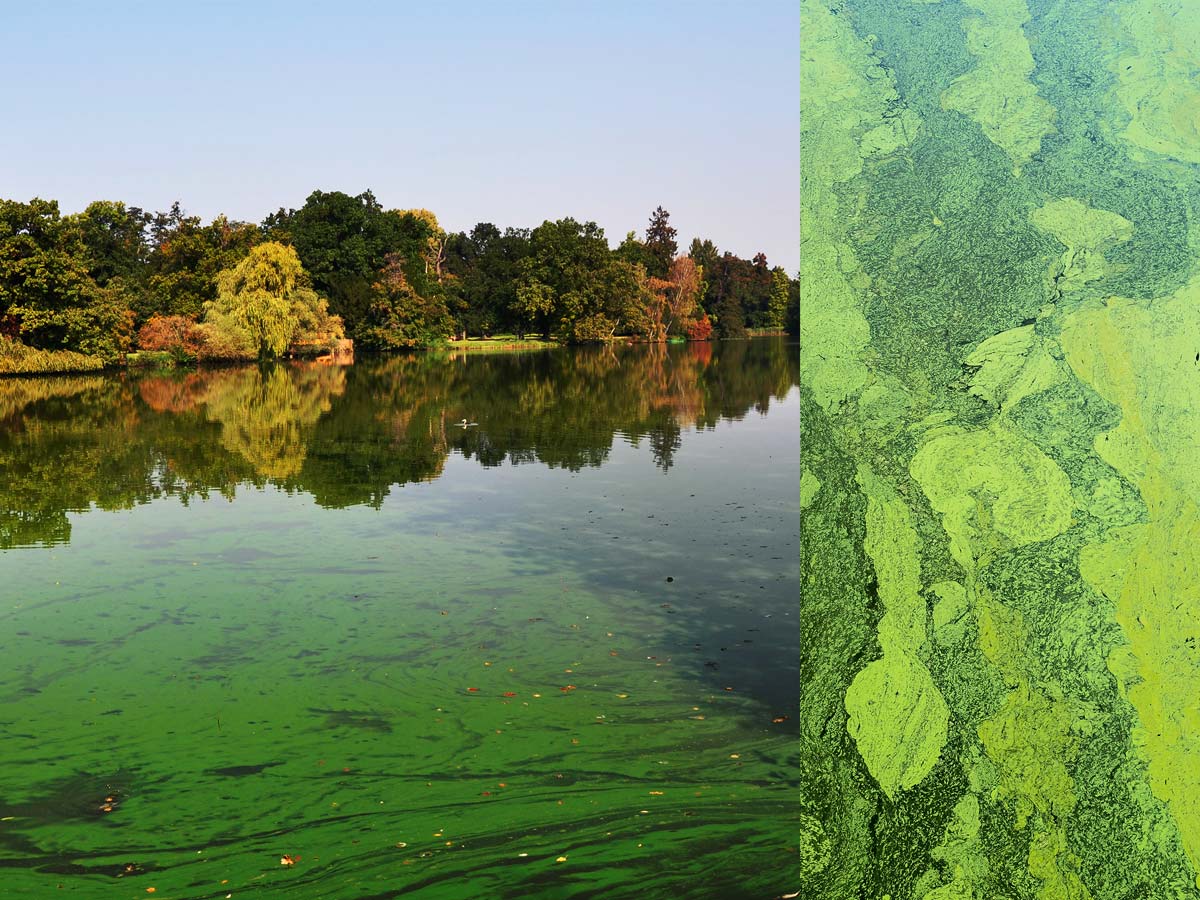Transformation through collaboration: Connections for a shared world
Innovation Issue 37: Fall 2022
Raising the bar on predicting nutrient loads in Ontario streams
Intersection
Raising the bar on predicting nutrient loads in Ontario streams
Algae blooms in Ontario’s Great Lakes can be more than a nuisance. They have the power to halt the growth of aquatic life, harm local residents and tourism, and disrupt water supplies in extreme cases. As a result, much of Ontario’s water quality policy is focused on the issue of eutrophication, which is when too much algae grows in rivers and lakes as they become overloaded with nutrients.
Toronto Metropolitan University (TMU) Geography and Environmental Studies professor Christopher Wellen, together with post-doctoral fellows Cody Ross and Kelly Biagi, are finding novel ways to examine the impact of land use, land management and climate on nutrient loading in streams flowing to the Great Lakes. The collaborative research with the Ontario Ministry of the Environment, Conservation and Parks (MECP) is part of the ministry’s Multi-Watershed Nutrient Study.
“What you really need to know is, if the land is managed differently at a broad scale, will that improvement to management give you the water quality results that you're looking for?” said professor Wellen.
To start to find an answer, MECP used sensors and autosamplers to collect hundreds of metrics and samples over five years. Some readings were taken every five or 15 minutes and others more periodically, creating an abundant data set. Ross and Biagi then developed mathematical models to tease apart the different influences in those watersheds.
Drawing on their backgrounds in computer science, math and hydrology, the team developed a model, using the R programming language, that better predicts nutrient loads in the lower Great Lakes basin. Instead of implementing the more commonly used linear regression model, Ross and Biagi used a generalized additive model, which handles nonlinearities and autocorrelations better since linear regression models make statistical assumptions leading to errors when violated.
“In order to mitigate excess nutrient loading, an accurate, inexpensive method that can predict nutrient loads is needed,” said Biagi.
Ross and Biagi also incorporated novel metrics into their model, raising the bar on how much information can be incorporate into a model of nutrient loss. One metric was hysteresis, which is when there is a delayed effect in a physical system—such as a stream—after a new force or input is applied. Hysteresis is typically ignored in water quality models, but it can help explain the relationship between discharge and the concentration of nutrients in a stream at the early and later parts of a storm.
One benefit of the developed models is that it allowed the researchers to examine nutrient concentration at a much higher resolution.
“Rather than looking at things on an annual scale or a seasonal scale, we can look at these dynamics on a single event scale,” said Ross.
In a follow-up paper, the researchers isolated information to determine when nutrients are being lost from the landscape and entering streams, and in what types of conditions. Their research showed extreme rainfall events can be responsible for more than 50 per cent of annual nutrient loss from the land.
“Even though extreme rainfall events are infrequent, they're exceptionally important for managing nutrient losses,” said Ross. “That type of information is really important in terms of how we manage the land.”
What you really need to know is, if the land is managed differently at a broad scale, will that improvement to management give you the water quality results that you're looking for?

Read “Novel predictors related to hysteresis and baseflow improve predictions of watershed nutrient loads: An example from Ontario's lower Great Lakes basin (opens in new window) ” in the journal Science of The Total Environment.
Read the follow up study, “Total and dissolved phosphorus losses from agricultural headwater streams during extreme runoff events (external link, opens in new window) ” in the journal Science of The Total Environment.
